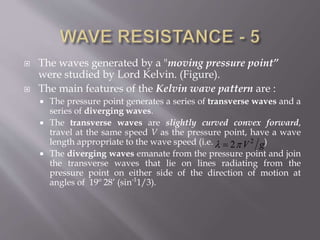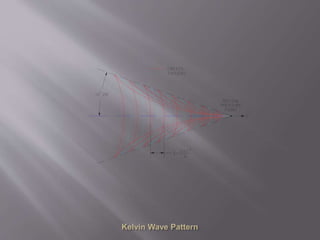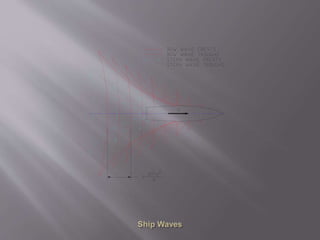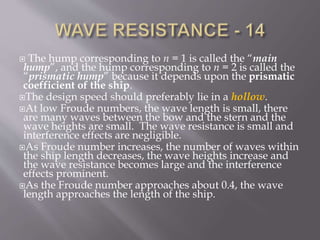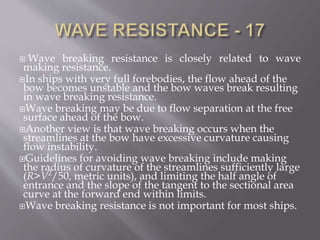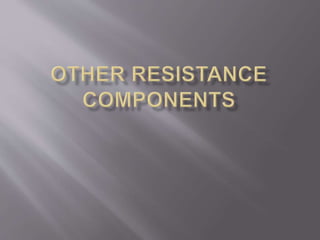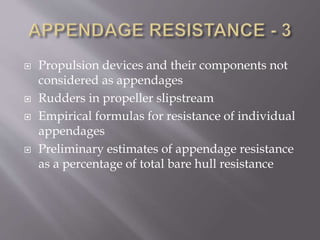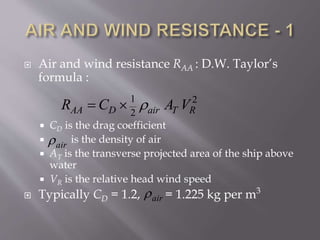This document discusses wave resistance in ships. It explains that wave resistance increases significantly at high speeds as waves generated by the ship grow larger. It also describes how the interference of bow and stern waves can result in either favorable or unfavorable wave patterns depending on their phase relationship. Finally, it discusses how ship speed is ideally operated in a "hollow" of the wave resistance curve where interference is favorable and resistance is lower.





